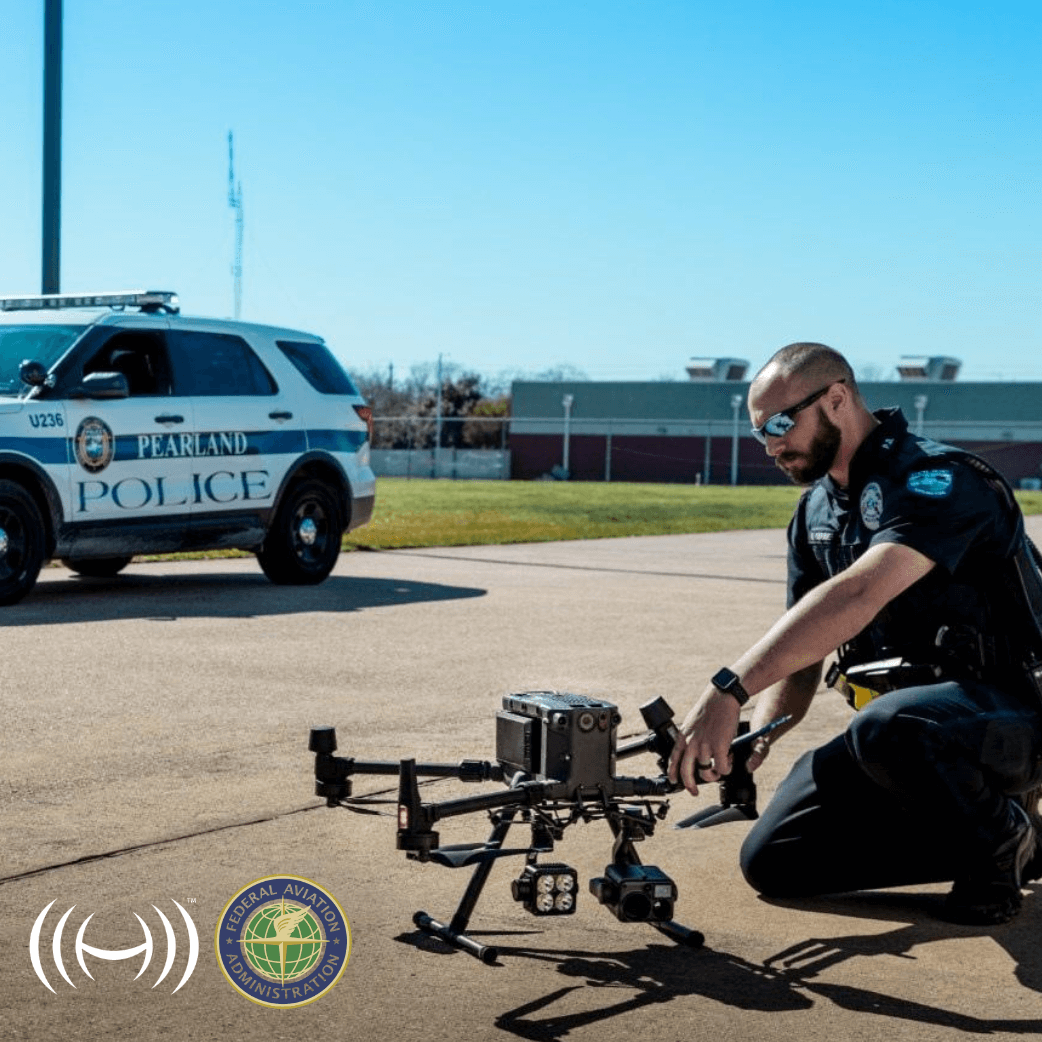
News
FAA Drone License - Do I Need One?
A guide to having a drone license in the United States. Find out when you need a drone license, what you have to do to get one, and how much it costs. ... Read More

usa.png HELIGUY.com™ note
This post is more pertinent to U.S. readers due to its themes around U.S. drone laws and training.
For a similar UK post, read this post about drone licences in the UK.
Flying a drone in the USA? Then you might be wondering about a drone license and if you need one?
This blog will explain when you are required to have a drone license and how to get one. It will also look at drone registerion with the FAA.
You can use the summary below to select a specific drone license question.
Do You Need A License To Fly A Drone In The USA?
Whether you need a drone license depends on how you use your Unmanned Aircraft System (UAS).
If you are using your drone for recreational reasons, and are not making money from your flights, then you do not need a license.
However, you will need to register your drone (see later), and be aware of certain rules within Part 107 designating how you can operate.
There are also plans to introduce an online aeronautical knowledge and safety test for hobbyists, who would be required to carry proof of test passage.
If you are a commercial drone pilot, you will need a drone license, known as an FAA Part 107 Remote Pilot Certificate.
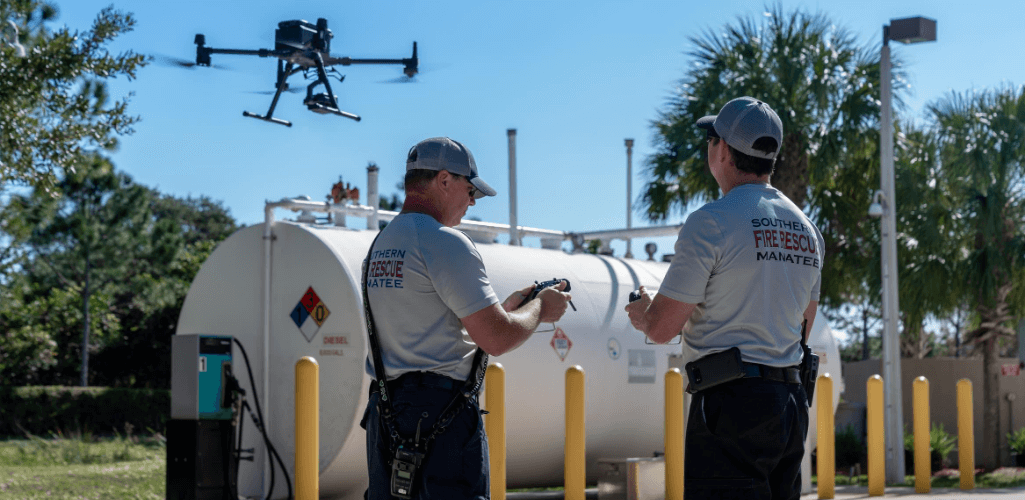
How Do I Get A Drone License?
If you have a small drone weighing less than 55 pounds, you can fly for work or business by following the Part 107 guidelines, which includes getting a Remote Pilot Certificate.
Obtaining a drone license for commercial operation involves a number of steps, including sitting an initial Airman Knowledge Test, also known as the Part 107 test.

Firstly, to qualify for a Remote Pilot Certificate, you must be:
At least 16 years old;
Able to read, write, speak, and understand English;
Be in a physical and mental condition to safely fly a UAS.
The next step is to have an FAA Tracking Number (FTN). You can obtain this by creating an Integrated Airman Certification and Rating Application (IACRA) profile.
Once you have done this, you can register for a knowledge test, which can be taken at an FAA-approved Knowledge Testing Center. There are almost 700 in the United States.
After passing the test, complete FAA Form 8710-13 for a Remote Pilot Certificate using the electronic FAA IACRA system. You will also need to pass a TSA security background check.
Having done all of this, you will have your drone license.
As a side note, operating a UAS weighing 55 pounds or more requires an exemption under Section 333.
Part 61 - The Exception To The Rule
An exception to the rule applies for Part 61 licensed pilots who want to fly a drone commercially.
Because Part 61 holders are recognized as being well-versed in aviation, the FAA has created a more streamlined certification process.
In this case, Part 61 pilots need to complete a free online training course, called Part 107 Small Unmanned Systems, to obtain a Part 107 drone license.
However, to take advantage of this, the holder of a manned pilot certificate must have completed a flight review in the last 24 months.
After completing the training course, Part 61 holders must submit an online application for the Part 107 Remote Pilot Certificate.
Certificate holders must then pass a re-current knowledge test every two years.
Part 107 Drone License Test - What You Need To Know
Passing the initial Part 107 Aeronautical Knowledge Test (Airman Knowledge Test) is key to obtaining a drone license.
The Part 107 test comprises 60 questions. It is multiple-choice, with three single responses (A, B, and C) for each question.
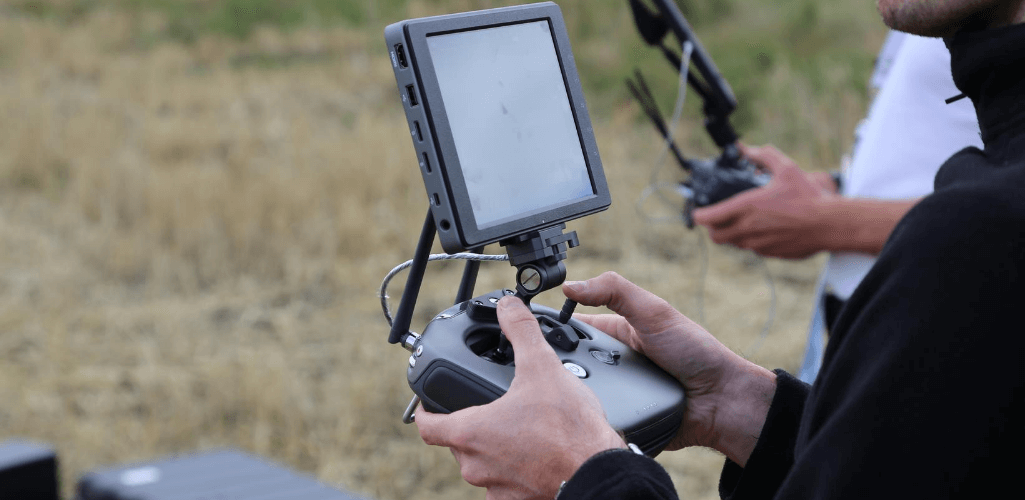
Key topic areas on the Aeronautical Knowledge Test include regulations, airspace classification, emergency procedures, effects of weather, airport operations, and maintenance and preflight inspection.
Candidates have two hours to sit the exam, which has a pass mark of 70%. This means you need to get 42 questions right.
Test centers charge approximately $150 to sit the exam.
Candidates who fail the test must wait a period of at least 14 days before retaking the test.
You must be able to show a copy of your initial knowledge test report if requested by the FAA as proof of currency. Therefore, it is best to keep a copy with you at all times when you are flying commercially.
Do I Need To Renew My Drone License?
Once you have a drone license, it is important to keep it up to date.
Holders of a Remote Pilot Certificate must be re-certified every two years.
To renew your drone license, you must pass the re-current knowledge test.
This knowledge test has 40 questions to be completed in 90 minutes. The pass mark is 70%.
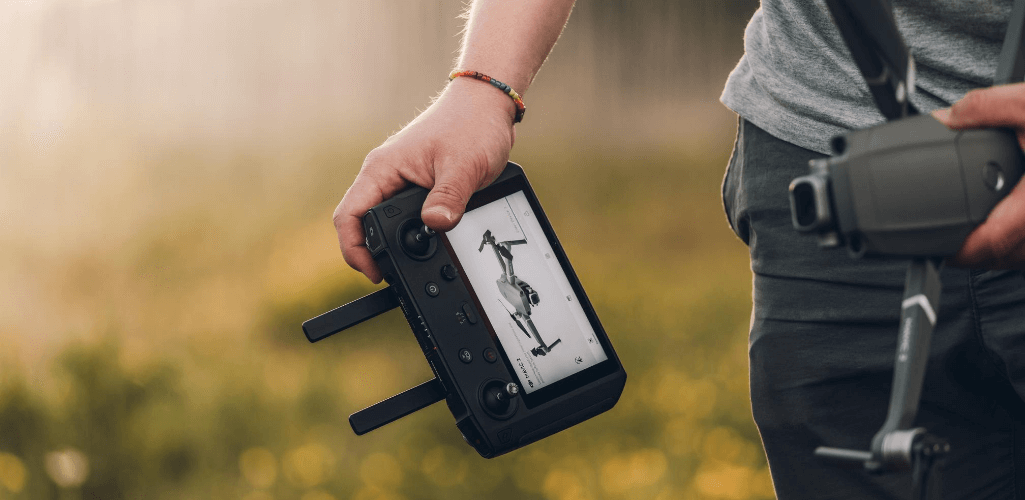
Successful completion of the re-current knowledge test renews the pilot’s currency for two years. However, the FAA does not issue a new license.
Candidates who fail the test must wait a period of at least 14 days before retaking the test.
Holders of a part 61 pilot certificate, who have a current part 61.56 flight review, must complete the Part 107 Small Unmanned Aircraft Systems Re-current online training course.
You must be able to show a copy of your re-current knowledge test report if requested by the FAA as proof of currency. Therefore, it is best to keep a copy with you at all times when you are flying commercially.
If you do not renew your drone license, you will lose the privileges to operate commercially. However, you can still fly as a hobbyist.
Initial v Re-current Knowledge Test - The Key Differences
So, whether you are applying for a new drone license or renewing your existing one, you will need to complete a knowledge test.
But what are the differences?
Firstly, the initial test comprises 60 questions and must be completed within two hours. In contrast, the re-current test is made up of 40 questions, to be done within 90 minutes.
Secondly, there are differences in the exam content, with the re-current test covering less topics, as this table below shows.
Topic | Initial Knowledge Test | Re-current Knowledge Test |
Operations | 35 - 40% | 20 - 30% |
Regulations | 15 - 25% | 30 - 40% |
Airspace and Requirements | 15 - 25% | 30 - 40% |
Weather | 11 - 16% | None |
Loading and Performance | 7-11% | None |
However, both exams have a 70% pass mark. So, that is 42 out of 60 for the initial test, and 28 out of 40 for the re-current exam.
Both tests are mulitple choice.
Drone License - Rules To Follow
So, you have your drone license. Congratulations.
But, obtaining a Remote Pilot Certificate does not give you free reign of the skies.
Despite having a drone license, there are still rules which you need to follow. These include:
The aircraft must be registered if over 0.55 lbs;
Keep the aircraft in sight (visual line-of-sight);
Fly under 400 feet;
Fly during the day;
Do not exceed 100 mph;
Give right of way to manned aircraft;
Do not fly over people;
Do not operate from a moving vehicle;
Operate in Class G airspace;
Operations in Class B, C, D and E airspace are allowed with the required ATC permission.
However, there are times when you can fly outside of these limitations - and that's when a Part 107 Waiver comes in.
FAA Part 107 Waiver
Pilots can request to fly specific drone operations not allowed under Part 107 regulations by requesting an operational waiver.
These waivers allow drone pilots to deviate from certain rules under Part 107 by demonstrating they can still fly safely using alternative methods.
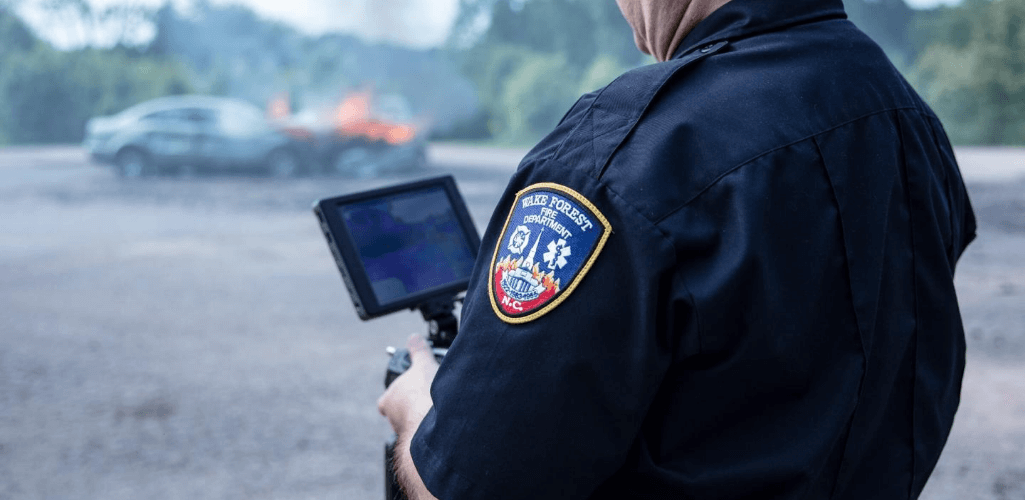
You need to apply for a Part 107 waiver if you plan to fly your UAS:
From a moving aircraft or a vehicle in populated areas;
At night;
Beyond visual line of sight;
Without having to give way to other aircraft;
Over a person/people;
In excess of 100 miles per hour ground speed;
More than 400 feet above ground level;
With less than 3 statute miles of visibility;
Within 500 feet vertically or 2000 feet horizontally from clouds;
Use a visual observer without following all visual observer requirements.
To obtain a waiver, decide which type you need and then make a submission through the FAA's DroneZone. The FAA aims to review and approve or disapprove waiver requests within 90 days of submission.
Drone License - Public Safety and Government
Government agencies (including Federal, State, and tribal), law enforcement, and public safety entities have two options for operating drones under 55 pounds.
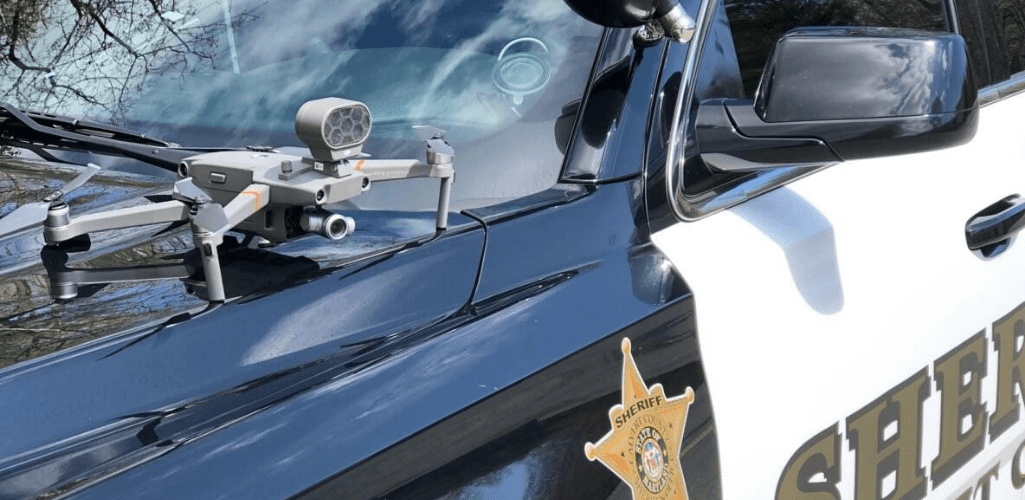
They can:
Fly under 14 CFR part 107, the small UAS rule. Part 107 allows operations of drones or UAS under 55 pounds at or below 400 feet above ground level for visual line-of-sight operations only.
Fly under the statutory requirements for public aircraft. Operate with a Certificate of Waiver or Authorization to be able to self-certify UAS and operators for flights performing governmental functions.
Meanwhile, to support first responders and other entities affiliated with them, the FAA can quickly issue authorizations for natural disaster and other emergency situation response.
Do I Need To Register My Drone In The U.S?
Firstly, it is important to say that a drone license and drone registration are two different things.
While a drone license applies to commercial operators, drone registration applies to the majority of pilots, even recreational users.
In the U.S, you must register your drone if it weighs between 0.55 lbs (250 grams) and 55 lbs (25 kg).
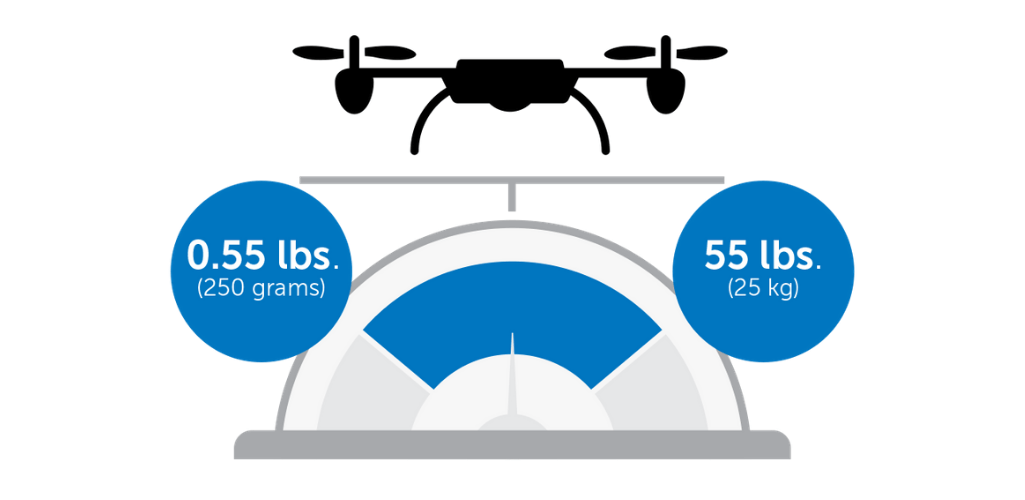
Registration costs $5 and is valid for 3 years. To register your drone, visitdronezone.faa.gov and select Fly sUAS under Part 107 to create an account and register your drone.
Once registered, mark your drone or drones with your registration number in case it gets lost or stolen.
A certificate of registration will also be issued. When operating your UAS you must be able to present the certificate in either print or electronic format if asked for proof of registration.
People who meet the criteria but do not register will be subject to civil and criminal penalties.
The FAA may assess civil penalties up to $27,500. Criminal penalties include fines of up to $250,000 and/or imprisonment for up to three years.
Drone operators flying UAS exceeding 55 lbs must register using the paper (N-number) registration process. Remember, operating a drone heavier than 55 lbs requires special Section 333 exemption.
FAA Drone License - FAQs
Here are some frequently asked questions about a U.S drone license.
When do I need a drone license?
In the United States, you need a drone license if you are operating a drone for commercial purposes.
What is the average cost of a drone license?
To obtain a drone license, you need to pass the Part 107 knowledge test. The average cost of the initial test is $150. A re-current test needs to be passed every two years, and the average cost of this is $150.
What weight does my drone need to be to get a drone license?
If you are a commercial drone user, you need a drone license. Part 107 allows operations of drones under 55 pounds. Operating a UAS weighing 55 pounds or more requires an exemption under Section 333 of the FAA Modernization and Reform Act of 2012
How do I prepare for my Part 107 test?
You can study for your knowledge test by visiting the FAA's library of resources.
